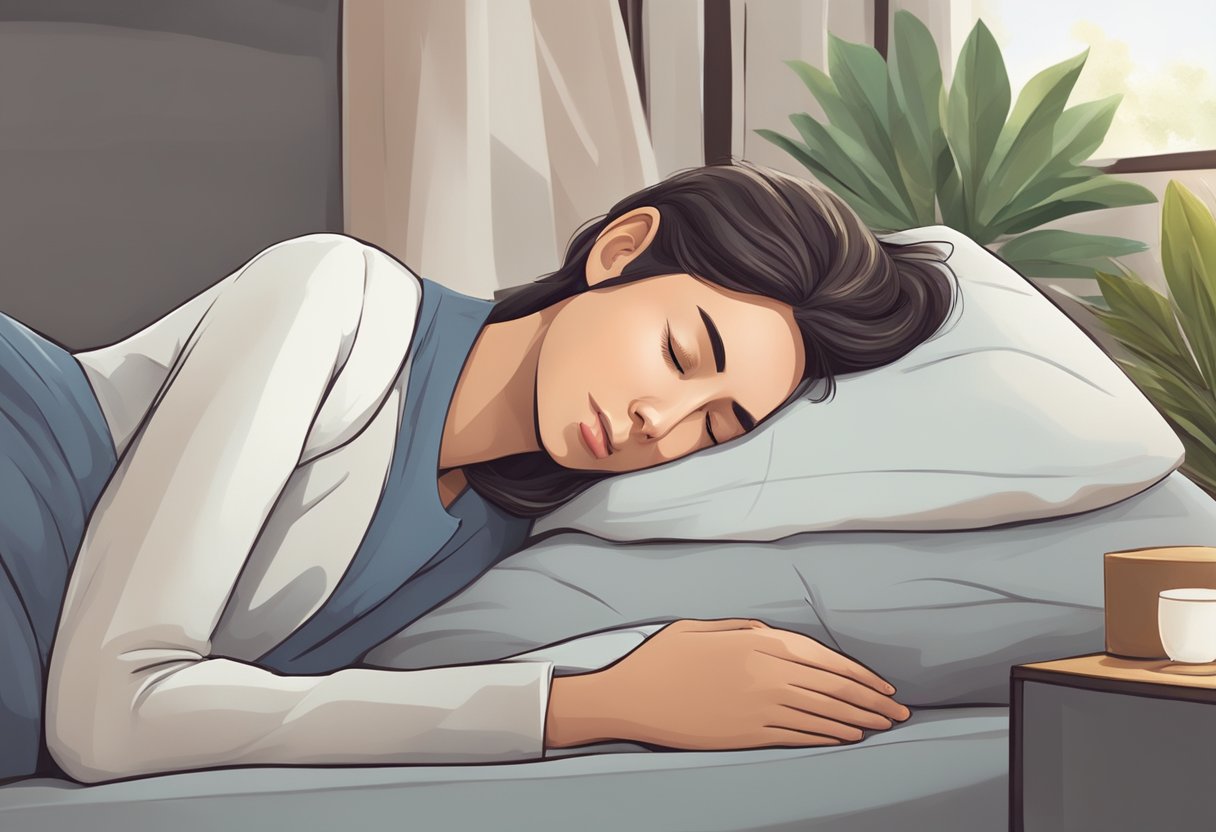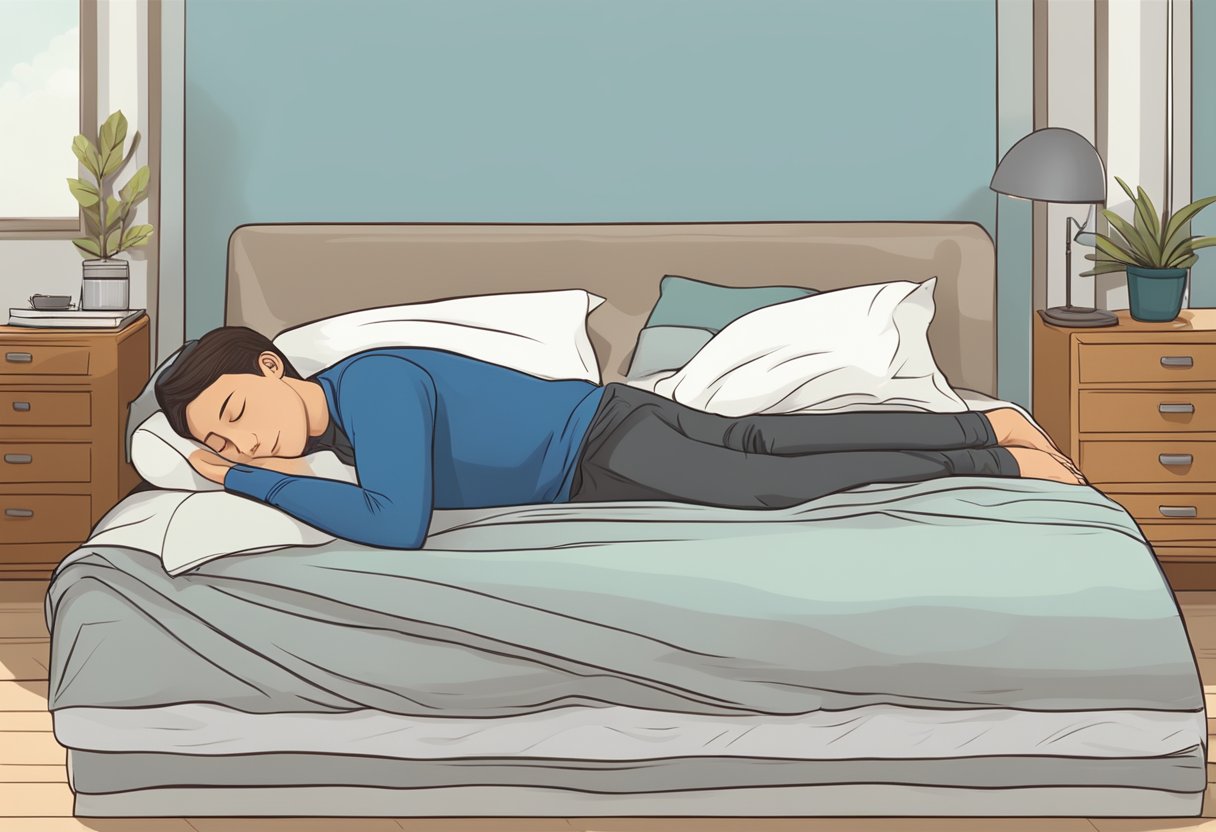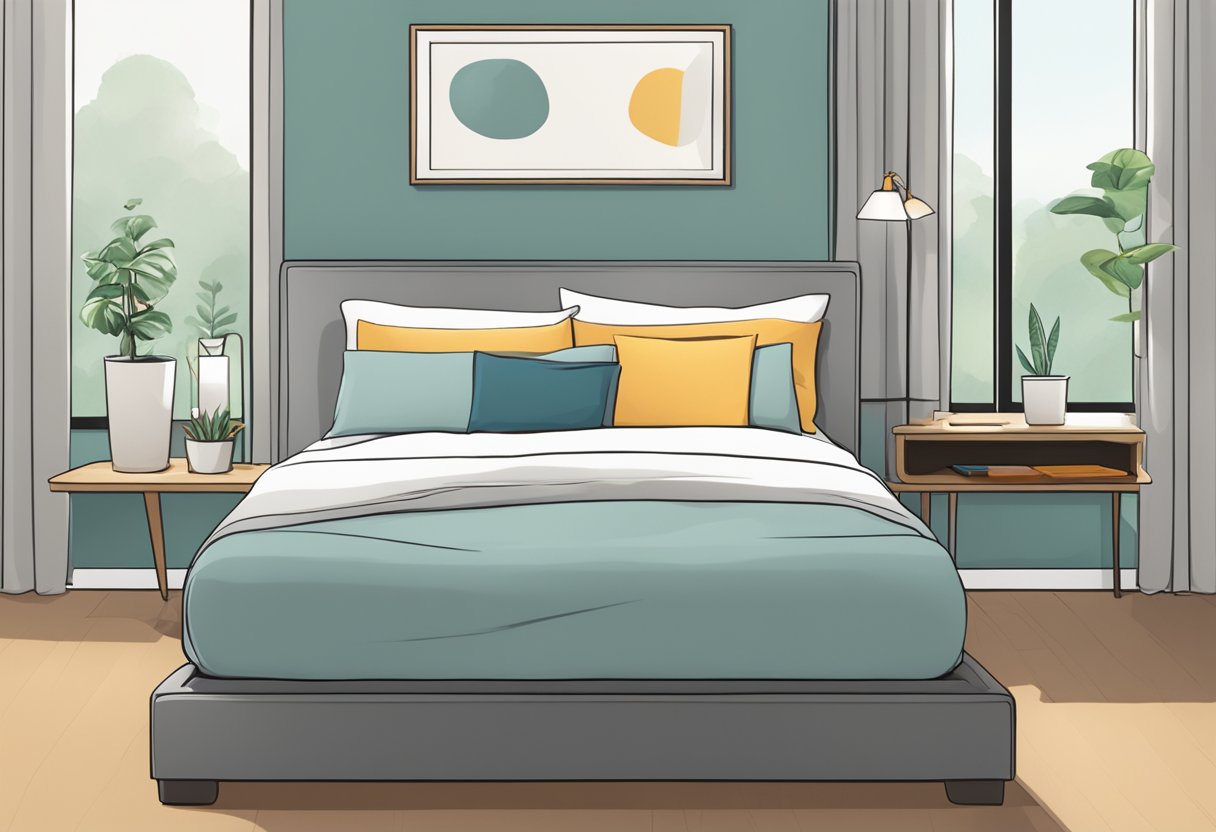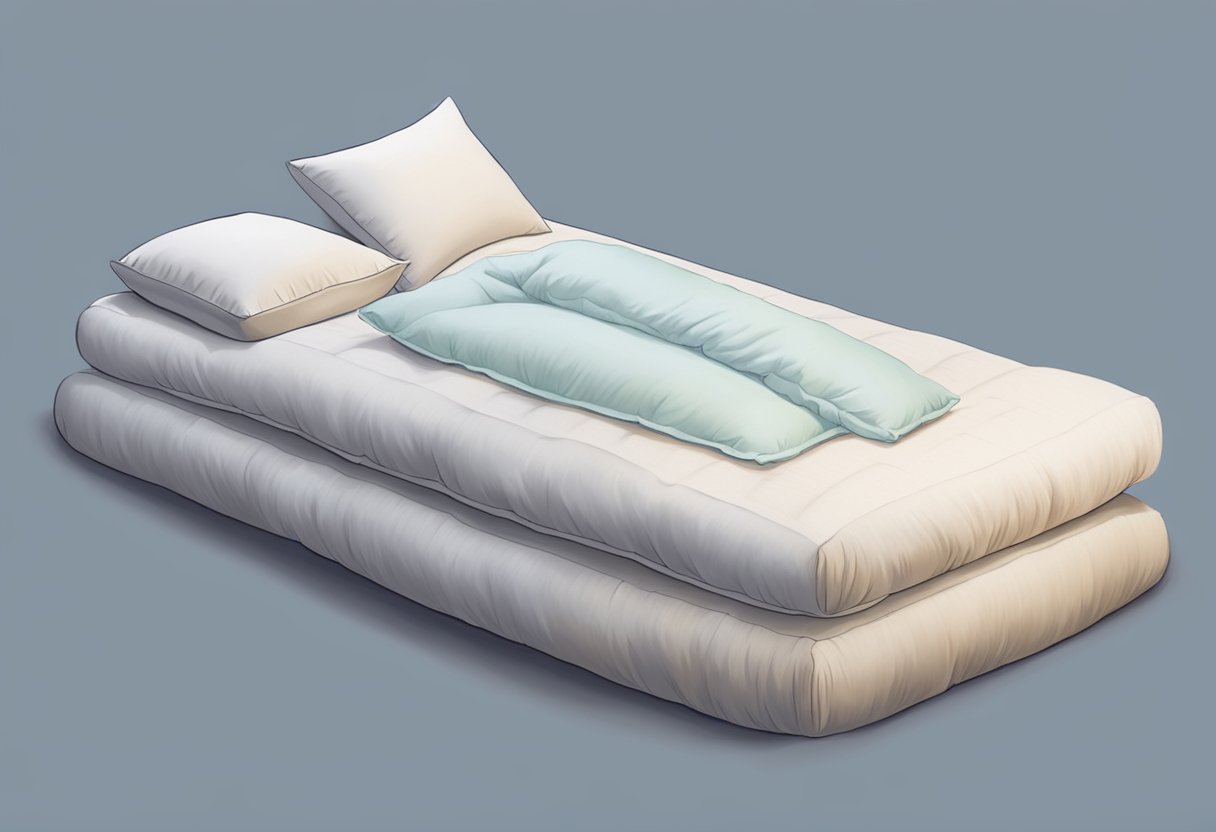Choosing the right side to sleep on can impact health and well-being. Sleeping on the left side is often recommended for better digestion and improved circulation, while some individuals may find the right side more comfortable. Understanding the differences between these positions helps in making the best choice for restful sleep.
The benefits of side sleeping extend beyond comfort. The left side is particularly noted for its potential positive effects on heart health and reducing acid reflux. However, some people may find sleeping on the right side more beneficial based on their unique health needs and preferences.
Exploring the pros and cons of each position leads to better rest and overall health. Knowing which side best suits individual requirements can enhance sleep quality and daytime performance.
Key Takeaways
- Sleeping on the left side may improve digestion and circulation.
- The right side can provide comfort and support for certain health conditions.
- A personalized choice of sleeping position can lead to better-quality sleep.
- Sleep position plays a major role in choosing the right mattress. Each position places different pressure on the body, which means proper support and comfort are essential for restful sleep.


Sleep position plays a significant role in health and comfort. Different positions can impact bodily functions and overall rest quality. This article explores the anatomical and physiological aspects of sleep positions, comparing left versus right sleeping.
Anatomical and Physiological Considerations
When sleeping on the side, the body must align properly to avoid strain. This involves keeping the spine straight. A proper side sleeping position should allow the shoulders and hips to relax. A medium-firm pillow can support the head and neck.
Key Points:
- Spinal Alignment: Maintaining proper spine alignment helps reduce back pain.
- Pressure Points: Certain positions can increase pressure on organs, possibly affecting breathing and circulation.
A person sleeping on their side should consider their mattress choice. A mattress that is too soft may lead to misalignment, while a firm mattress can create too much pressure, affecting comfort.
Comparing Left and Right Positions
Choosing between left and right sleeping positions depends on individual health needs. Left side sleeping is often recommended for pregnant individuals and those with acid reflux. This position can improve circulation and may alleviate symptoms of gastroesophageal reflux disease (GERD).
Conversely, right side sleeping may benefit those who prefer a less restrictive feeling. However, it can worsen heartburn for some. Understanding the effects of each position is crucial for making informed decisions.
Quick Comparison:
- Left Side Benefits: Better for digestion and circulation.
- Right Side Benefits: May feel more comfortable for some but can worsen heartburn.
Selecting the proper side sleeping position involves considering personal comfort and any medical conditions. A supportive sleeping environment significantly contributes to quality rest.

Sleeping on the left side offers several notable advantages, particularly for the digestive system and heart health. This position can positively influence various bodily functions and promote better overall well-being.
Digestive System Advantages
When a person sleeps on their left side, gravity helps food move through the digestive tract more efficiently. This position may reduce the chances of acid reflux and gastroesophageal reflux disease (GERD).
The stomach and pancreas align better when lying on the left. This positioning may enhance digestion and nutrient absorption. Research shows that side sleeping can lessen heartburn, so it’s great for those who experience discomfort from lying flat on their back or right side.
Additionally, sleeping on the left side can reduce pressure on the intestines, which may lead to improved regularity and less bloating.
Cardiac Health Implications
Sleeping on the left side can benefit heart health as well. This position helps keep the heart away from the pressure of the body’s weight for better blood flow. For individuals with heart conditions or those concerned about cardiovascular health, this position may be especially beneficial. Healthy blood circulation is essential for optimal heart function, and sleeping on the left side supports this by allowing unrestricted blood flow.
Moreover, side sleeping can reduce the risk of snoring and sleep apnea, which are linked to heart health issues. Choosing to sleep on the left side may, therefore, contribute to a healthier heart.

Sleeping on the right side offers specific advantages for individuals under certain conditions. While many may caution against this position, it can be beneficial for personal comfort and during pregnancy.
Personal Comfort and Health Conditions
For some, sleeping on the right side provides greater comfort. This position may relieve discomfort on the left side caused by certain medical conditions. People with heartburn or acid reflux often find relief when sleeping on their right side. Health professionals suggest that this position can ease discomfort for some individuals.
Additionally, right-side sleeping may help those with neck or back pain. It promotes neutral alignment for the spine, which can reduce stiffness.
Pregnancy and Sleep Positioning
Pregnant individuals may also benefit from sleeping on the right side. This position can improve circulation and reduce pressure on the uterus, which helps enhance blood flow to the fetus. Although left-side sleeping is commonly recommended, the right side offers a comfortable alternative. It helps alleviate pressure in the lower back while promoting good circulation.
Staying in a comfortable position is essential for rest and relaxation during pregnancy. Therefore, right-side sleeping remains a valid choice for expectant mothers.

To achieve a restful night as a side sleeper, focus on selecting the right mattress and pillow and maintaining proper body alignment. These factors greatly affect comfort, support, and overall sleep quality.
Mattress and Pillow Selection
Choosing the right mattress and pillow is essential for side sleepers. A medium-firm mattress is often recommended, as it offers enough support for the spine while providing some cushioning. This helps relieve pressure on the shoulders and hips.
When selecting a pillow, choose one that supports the neck’s natural curve. A contoured pillow designed for side sleeping will keep the spine aligned. The pillow’s height should fill the gap between the shoulder and the head.
Consider using a body pillow for added support and comfort. It can help position the legs better, reducing strain on the lower back.
Body Alignment Techniques
Proper body alignment is crucial for comfort during side sleeping. Begin by lying on your side with your legs slightly bent. This position keeps the spine in a neutral alignment. Placing a pillow between the knees further enhances alignment, reducing pressure on the hips and lower back. It also prevents the body from twisting during sleep.
Switching sides occasionally is also important. This practice balances pressure points and helps avoid discomfort or pain from prolonged pressure on one side.
Side sleeping is popular, but it can lead to issues, particularly with shoulder and hip pressure. It’s also associated with breathing problems like sleep apnea and snoring. Finding the right solutions can enhance comfort and improve sleep quality.
Managing Shoulder and Hip Pressure
Side sleepers often develop pressure points in the shoulders and hips, which can lead to discomfort and pain over time. To minimize this, a supportive pillow aligns the neck properly, while a firmer mattress distributes body weight evenly, relieving pressure.
A contour pillow can offer additional support. Placing a pillow between the knees keeps the hips aligned and reduces strain on the lower back. Changing sleep positions regularly throughout the night also alleviates pressure.
Dealing with Sleep Apnea and Snoring
Sleep apnea and snoring are common concerns for many side sleepers. Sleeping on the back can exacerbate these issues, so side sleeping may provide some relief. To manage snoring, use a specialty pillow designed for side sleepers, which slightly elevates the head. This position opens the airways and helps reduce snoring. Maintaining a healthy weight and avoiding alcohol before bedtime can further improve sleep quality.
For sleep apnea, it’s essential to consult a doctor for an evaluation. They may recommend a continuous positive airway pressure (CPAP) machine to help keep the airways open throughout the night.

Choosing the right side to sleep on can affect overall health. Factors like personal comfort and specific health concerns play a significant role in this decision.
Personal Sleep Assessment
A personal sleep assessment is crucial for finding the best side to sleep on. Individuals should consider how each position impacts their comfort and sleep quality.
- Left Side: This position is often recommended for better blood flow and may help reduce pressure on internal organs.
- Right Side: Some find the right side more comfortable, although it can exacerbate issues like acid reflux.
A simple way to assess sleep quality is by keeping a sleep journal. Track feelings of restfulness and any discomfort. Recognizing patterns can help identify the optimal sleeping position.
Addressing Individual Health Concerns
Health issues significantly influence the decision on which side to sleep on.
- Acid Reflux: Those with heartburn may benefit from sleeping on their left side. This position can reduce pressure on the stomach and help alleviate symptoms.
- Pregnancy: Pregnant individuals are encouraged to sleep on their left side to improve blood circulation to the fetus.
- Sleep Apnea: Side sleeping can improve breathing for some individuals, especially when done correctly.
Listening to one’s body and consulting a healthcare provider can improve the sleep experience. Individuals should prioritize comfort and health needs when making their decision.

Selecting a mattress that suits an individual’s sleep position is essential for comfort and support. Consider these key factors:
Firmness Level
- Soft: Best for side sleepers who need cushioning for shoulders and hips.
- Medium: Ideal for back sleepers, offering support while allowing some sinkage.
- Firm: Suitable for stomach sleepers to prevent back strain.
Material Types
- Memory Foam: Contours to the body, reducing pressure points. Ideal for side sleepers.
- Latex: Provides bounce and support, suitable for all sleep positions.
- Innerspring: Delivers a traditional feel with good support for back and stomach sleepers.
Special Features
- Cooling Properties: Regulates body temperature, beneficial for all sleepers.
- Edge Support: Important for those who sit on the bed’s edge or move around at night.
Health Considerations
- People with conditions like acid reflux may benefit from mattresses that allow elevation for better support. Sleeping on the left side can also reduce symptoms.
By considering these factors, individuals can select a mattress that aligns with their preferred sleep position, ensuring a more restful night.
The Helix Midnight Luxe delivers an ideal balance of comfort, support, and durability. Its medium-plush feel caters to both back and side sleepers for pressure relief and promoting proper spinal alignment. The hybrid construction blends memory foam for contouring with individually wrapped coils for responsive support, helping to prevent back strain. Its cooling technology helps regulate body temperature, so it’s great for hot sleepers.
Its zoned support adds extra lumbar support while cushioning the shoulders and hips, providing relief for those with back pain. With high-quality materials and enhanced edge support, the Helix Midnight Luxe ensures a luxurious and restful sleep experience.
Discover more about how to choose the best mattress for your sleep needs in their comprehensive guide on comfort, support, and durability.
Frequently Asked Questions
Many people have questions about the best sleeping side for health. The benefits of sleeping positions vary depending on individual conditions and needs. Below are some common questions regarding side sleeping.








